We have likely all seen the stereotypical image of a knight in shining armor , but there is more to the world of armory than the steel plate armor we are often exposed to. Armor came in innumerable shapes, sizes, materials, and functions, and it wasn’t just knights that wore them!
We have chosen to feature 16 particularly magnificent suits of armor , from the ornate and luxurious armor of kings and princes (even child princes!), to ancient Egyptian crocodile armor, Pacific island coconut armor, and, of course, the elaborate armor of the Japanese Samurai.
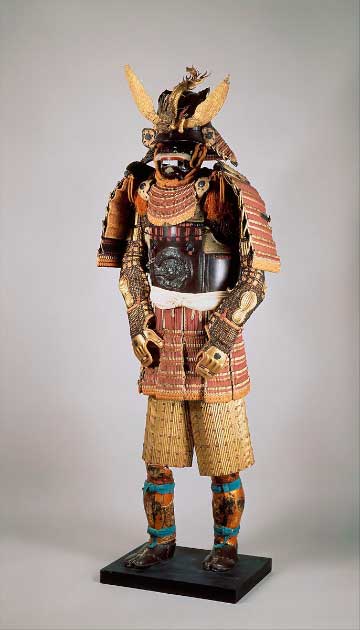
A ‘Gusoku’ suit of armor from the armory of the Daimyo (Lord) of Sendai in Japan. It is made with iron, lacquer, silk, and gilt copper. The helmet bowl dates from the 16 th century; the remainder of the armor was constructed in the 18 th century. Source: Metropolitan Museum of Art / Public Domain.

The last royal armor made in Europe. It was presented to the five-year-old Luis, Prince of Asturias (1707 – 1724 AD) by his great-grandfather Louis XIV of France (1638–1715 AD). It was constructed with steel, gold, brass, silk, cotton, metallic yarn, and paper. Source: Metropolitan Museum of Art / Public Domain
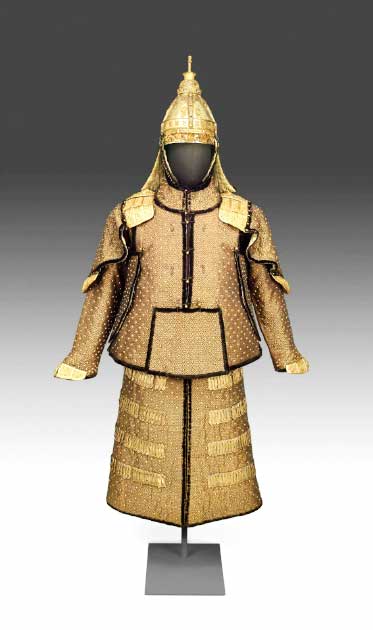
Ceremonial helmet and armour from the Qing dynasty in China. The helmet is bejewelled silver, while the armor is made with velvet, silk, and brocade reinforced with gilded copper alloy studs and lamellae. A Tibetan influence is visible in the graphs applied to the rim of the helmet. Originally it would have had a ‘mirror’ breast and back plate. The armor would have been worn by a guard in the Forbidden City during a ceremonial occasion. Credit: Trustees of the British Museum / CC by SA 4.0
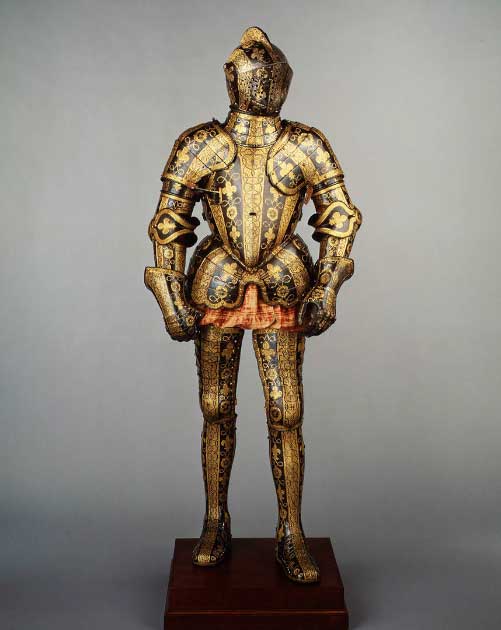
Armor of George Clifford, Third Earl of Cumberland. It was constructed about 1580–85 AD out of steel, and was etched, blued, and gilded. Weight: 60 lb. (27.2 kg). Source: The Metropolitan Museum of Art , Public Domain.
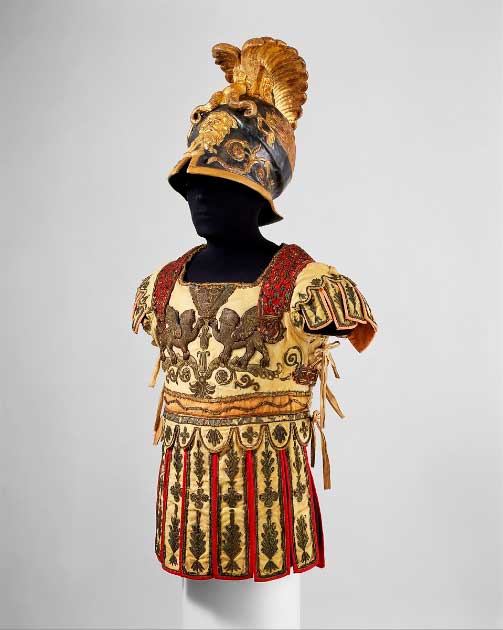
Costume Armor in the Classical Style ca. 1788–90 AD. The helmet includes an original paper label of Hallé French. The embroidered tunic represents an embossed bronze cuirass of the type worn by high-ranking Roman officers. Source: The Metropolitan Museum of Art , Public Domain.
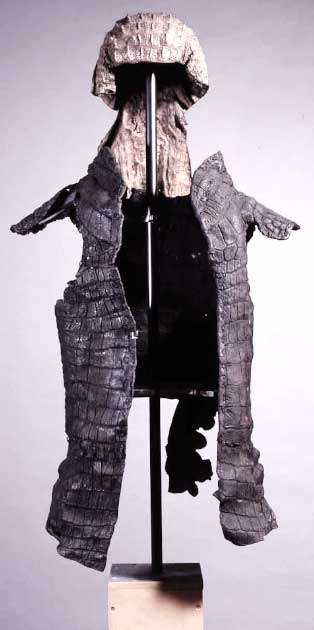
Egyptian Crocodile Armor dating to the Roman Period, 3 rd century AD. The armor is made from the skin of a crocodile and would have been used in military-style ceremonies of the crocodile cult. Credit: Trustees of the British Museum / CC by SA 4.0

Armor (Yoroi) of Ashikaga Takauji (1305–1358 AD), Japan. Yoroi suits of armor were in use from around the 10th to the 14 th century and were generally worn by warriors on horseback. Weight: 25 lb. 15 oz. (11.77 kg). Source: The Metropolitan Museum of Art , Public Domain.
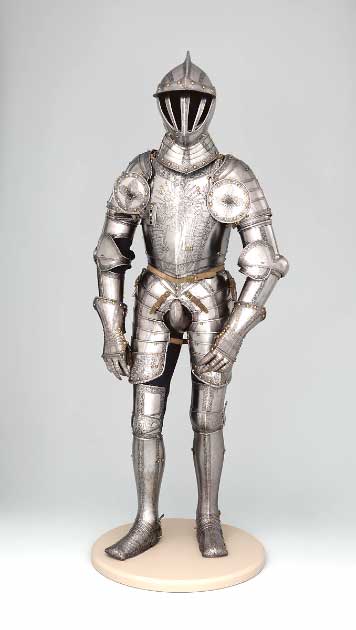
Armor of Emperor Ferdinand I, dated 1549 AD. The ownership of this armor by Ferdinand I (1503–1564) is indicated by heraldic emblems on the toe caps: the imperial double-headed eagle surmounted by a royal crown. Weight: 52 lb. 14 oz. (24 kg). Source: The Metropolitan Museum of Art , Public Domain.
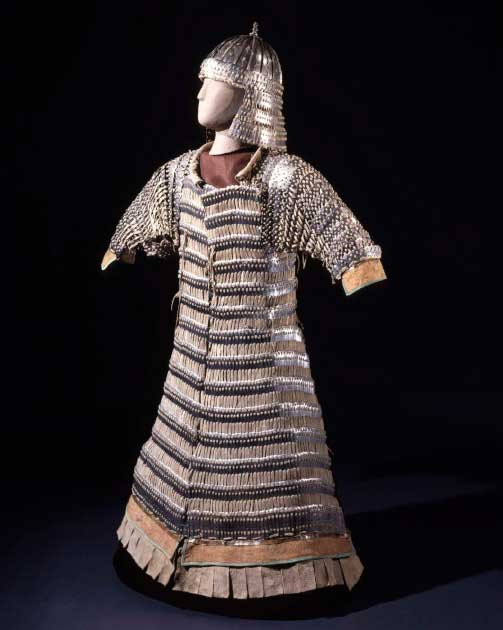
Tibetan armor made of steel, leather and cloth, China. Credit: Trustees of the British Museum / CC by SA 4.0
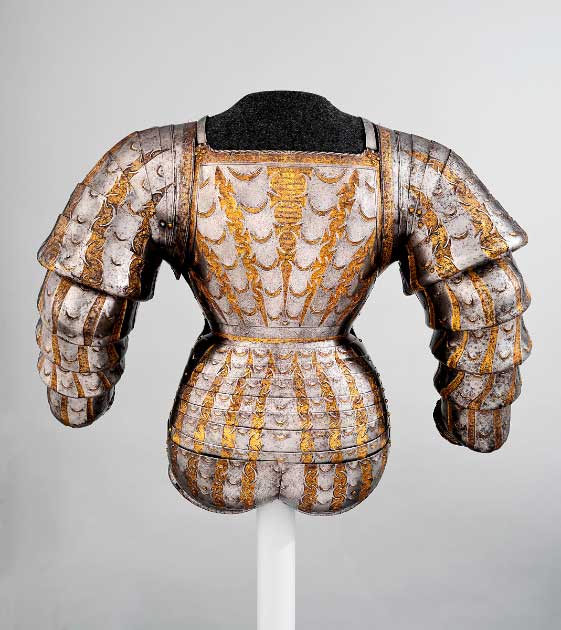
Portions of a Costume Armor ca. 1525 AD. This armor reproduces in steel the extravagant puffed and slashed costume of the German Landsknechte (mercenary infantry troops). It may have been made for Jerzy Herkules Radziwill (1480–1541), a powerful Polish nobleman. Source: The Metropolitan Museum of Art , Public Domain.
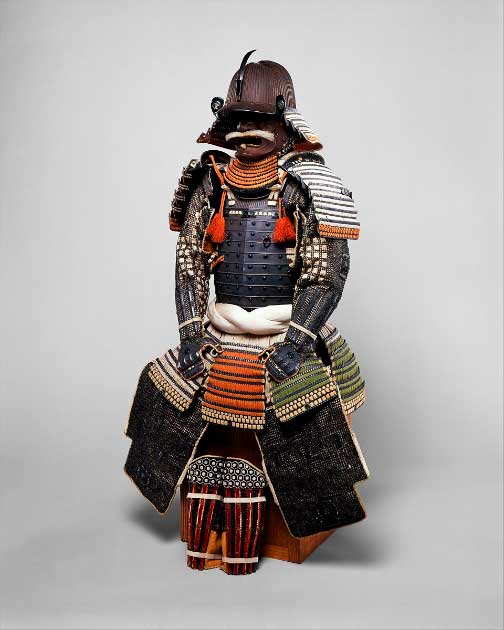
18th century Gusoku armor from Japan. The helmet bowl is made from 84 ridged iron plates and the cuirass consists of eight vertical plates connected with ornamental rivets Iron, lacquer, copper-gold alloy, silver, silk, horse hair, and ivory. Source: The Metropolitan Museum of Art , Public Domain.
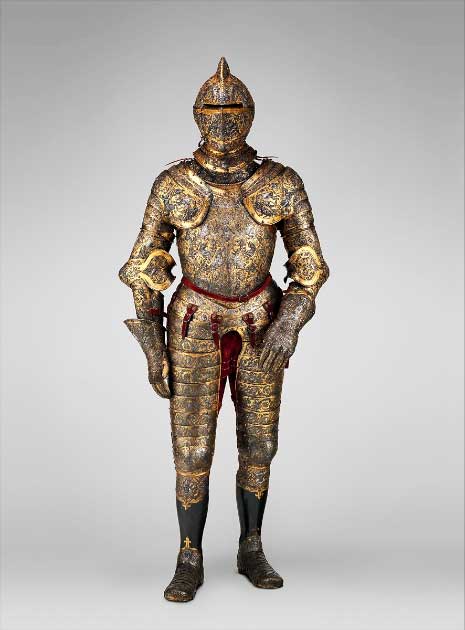
The armor of Henry II, King of France, ca. 1555 AD. This is one of the most elaborate and complete French parade armors. The surfaces are covered by dense foliate scrolls inhabited by human figures and a variety of creatures that derive from the Italian. Weight: 53 lb. 4 oz. (24.20 kg). Source: The Metropolitan Museum of Art , Public Domain.
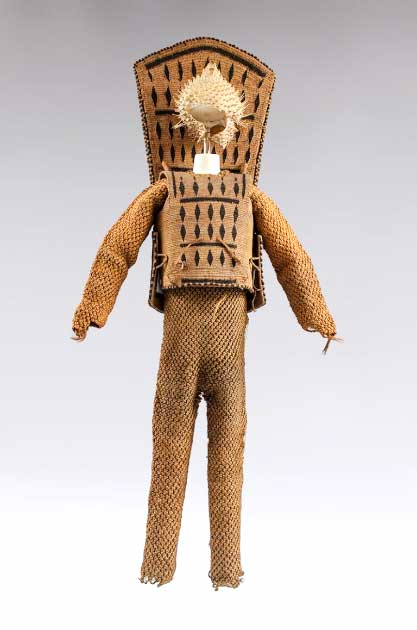
Kiribati armor made with coconut fiber and decorated with human hair The helmet is made from a porcupine fish. The Republic of Kiribati is a collection of islands in the Pacific Ocean. The armor provided protection from shark’s-teeth-edged swords, spears, and daggers carried by island warriors. Credit: Josh Murfitt, Museum of Archaeology and Anthropology, University of Cambridge)
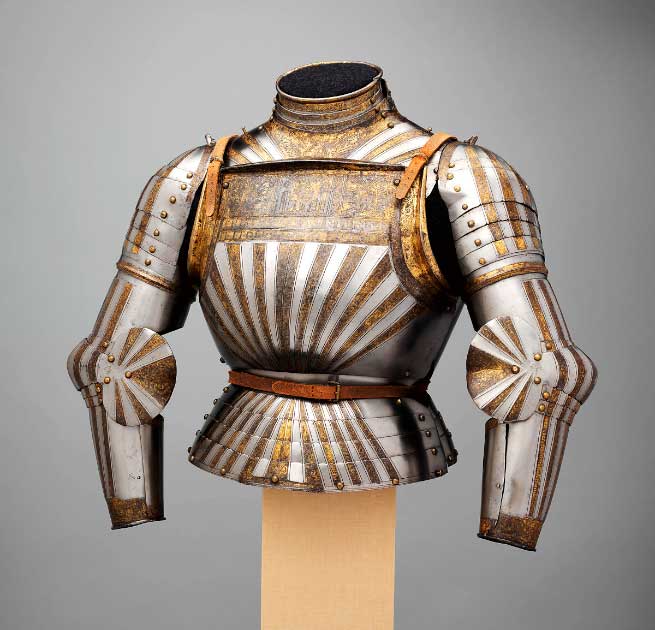
This is a rare example of Italian light-cavalry armor decorated with fluted surfaces in the German fashion, ca. 1510 AD. Its etched and richly gilt decoration is derived from Christian symbolism and the Bible. Weight: 19 lb. 13 oz. (8.98 kg). Source: The Metropolitan Museum of Art , Public Domain.
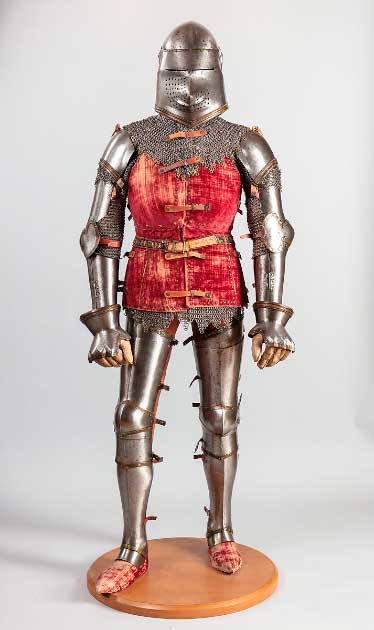
Italian armor ca. 1400–1450 AD discovered in the ruins of the Venetian fortress at Chalcis, on the Greek island of Euboea, which had fallen to the Turks in 1470. Weight: 41 lb. (18.6 kg). Source: The Metropolitan Museum of Art , Public Domain.
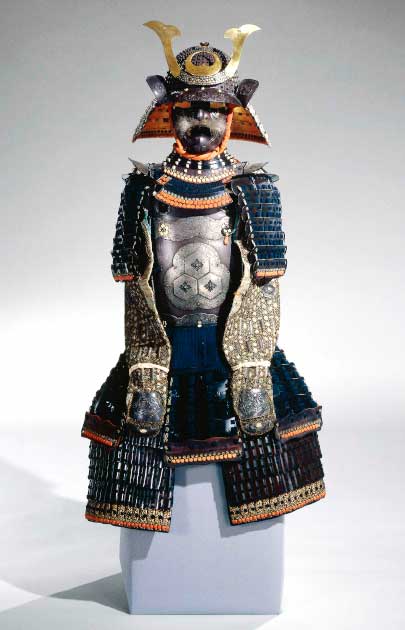
Helmet (kabuto) from 17 th century Japan (Edo Period) made of steel, russet iron, mail, and lacquered iron and leather sheet. Cuirass and sleeves from late 16 th century (Momoyama Period). Other parts from 18 th – 19 th century. Credit: Trustees of the British Museum / CC by SA 4.0.
Top image: The armor of Henry II, King of France, ca. 1555 AD. This is one of the most elaborate and complete French parade armors. The surfaces are covered by dense foliate scrolls inhabited by human figures and a variety of creatures that derive from the Italian. Weight: 53 lb. 4 oz. (24.20 kg). Source: The Metropolitan Museum of Art , Public Domain.
By Joanna Gillan
Related posts:
Views: 0
 RSS Feed
RSS Feed

















 October 23rd, 2022
October 23rd, 2022  Awake Goy
Awake Goy  Posted in
Posted in  Tags:
Tags: 
















